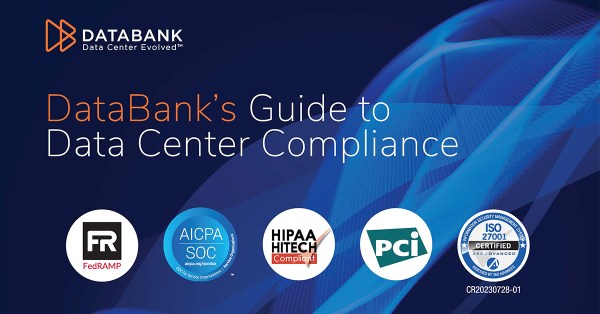The use of data centers is continuing to grow. Moreover, that growth looks set to continue for the foreseeable future. While this brings many benefits, it also means that data centers are likely to remain highly valuable targets for cyberattackers. With that in mind, here is a brief overview of cybersecurity initiatives in data centers.
The landscape of cyber threats
Data centers face a wide range of cyber threats with highly varying levels of frequency, scale, and sophistication. At the moment, common threats include Distributed Denial of Service (DDoS) attacks, malware infections, and phishing attempts.
Cyber threats continue to evolve in sophistication and scale, driven by advancements in technology and tactics employed by threat actors. This makes it essential for data center operators to keep updating and enhancing their cybersecurity position.
The influence of law enforcement and compliance
Data centers typically hold a lot of sensitive data including personal data. This data is increasingly likely to be protected by law and/or regulatory compliance programs. These are typically not exclusively focused on the need to prevent cyberattacks. They will, however, usually include this issue within their remit.
This means that investments in cybersecurity have a defensive function as well as a proactive one. The defensive function is that it protects the organization from the consequences of breaking the law and/or breaching compliance standards.
The proactive one is that it provides a high level of reassurance to key stakeholders. These can include suppliers, employees, and/or shareholders as well as (potential) customers. By doing so, it can enable the organization to access opportunities that would otherwise have been closed to them.
Cybersecurity initiatives in data centers
Here are 10 of the most important currency cybersecurity initiatives in data centers.
Multi-factor authentication (MFA): Implementing MFA requires users to provide multiple forms of verification, such as passwords, biometrics, or security tokens, before accessing data center systems or resources. This adds an extra layer of security beyond traditional password-based authentication, reducing the risk of unauthorized access due to compromised credentials.
Vulnerability scanning and patch management: Conducting regular vulnerability scans helps identify security weaknesses in data center infrastructure, applications, and systems. Patch management processes ensure that identified vulnerabilities are promptly addressed by applying security patches and updates to mitigate the risk of exploitation by attackers.
Network segmentation: Segmenting the data center network into distinct zones or segments restricts lateral movement by attackers in the event of a breach. By enforcing strict access controls and firewall rules between segments, organizations can contain potential threats and limit their impact on critical systems and data.
Intrusion detection and prevention systems (IDPS): IDPS solutions monitor network traffic and system activity for signs of suspicious or malicious behavior. These systems can detect and block known threats, such as malware and unauthorized access attempts, in real-time, helping prevent security incidents and data breaches.
Security information and event management (SIEM): SIEM platforms aggregate and analyze security event logs from various sources across the data center infrastructure. By correlating and prioritizing security events, SIEM tools enable faster detection and response to security incidents, improving overall threat visibility and incident management capabilities.
Endpoint security solutions: Deploying endpoint security solutions, such as antivirus software, endpoint detection and response (EDR) tools, and device encryption, protects individual devices (e.g., servers, workstations) from malware infections, data theft, and unauthorized access. These solutions help secure endpoints both within and outside the data center environment.
Data encryption: Implementing encryption mechanisms, such as encryption at rest and in transit, helps protect sensitive data stored in data center servers, databases, and storage systems. Encryption algorithms ensure that data remains unreadable and secure, even if accessed by unauthorized parties or in the event of a breach.
Incident response planning: Developing and regularly updating incident response plans enables data center teams to effectively respond to security incidents and minimize their impact. These plans outline procedures for detecting, containing, and remediating security breaches, as well as communicating with stakeholders and regulatory authorities during a security incident.
Regular security awareness training: Providing comprehensive security awareness training to data center staff educates employees about common cyber threats, phishing scams, and best practices for maintaining security hygiene. By raising awareness and promoting a security-conscious culture, organizations can mitigate the risk of human error and insider threats.
Continuous monitoring and auditing: Implementing continuous monitoring solutions and conducting regular security audits help maintain visibility into the data center environment and ensure compliance with security policies and regulatory requirements. Continuous monitoring enables real-time threat detection and proactive risk management, while audits validate the effectiveness of security controls and identify areas for improvement.







